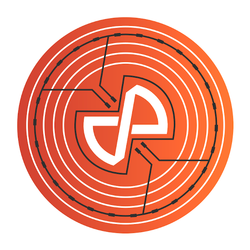- Ripple’s new Colombia pilot uses XRP Ledger for traceability and microfinance, targeting 300 smallholder farmers producing panela.
- It introduces a “Farm Now, Pay Later” model to provide upfront resources with post-harvest repayment.
- The blockchain-based system allows users to track via QR codes, aiming for a global model for financial inclusion in rural agricultural sectors.
Ripple is expanding its push into real-world blockchain use cases with a new agricultural pilot in Colombia aimed at smallholder farmers.
The Ripple Impact Pilot is the company’s second initiative this year with Mercy Corps Ventures and leverages the XRP Ledger (XRPL) to power blockchain-based traceability and microfinance.
The program, developed in partnership with traceability provider WËIA, is part of Ripple Impact’s broader “Unlocking Opportunity” strategy focused on financial inclusion and sustainable development.
Moreover, roughly 300 farmers are participating in the program, which processes 240 tonnes of panela monthly. 46% are women, a figure well above Colombia’s national average of 26% female participation in agriculture.
Related: Safe Enough To Store Trillions: Ethereum’s New Plan To Boost Security and Interest
No Credit, No Records, No Way In
The project targets a deeply underserved demographic.
Over 86% of Colombian farmers have no formal credit history or transaction records. In rural areas, 79% of the population lacks access to credit altogether. That exclusion has left most smallholders earning just 70% of a living wage, stuck in a cycle of low yields and limited market access.
How will it work? The pilot centers on panela, an unrefined cane sugar staple in Latin America. Using WËIA’s platform built on the XRPL, the system tracks each product from planting to harvest, assigning a QR code to provide verifiable data on sustainability practices.
That information can be accessed by buyers, offering transparency in the supply chain. The initiative also introduces a “Farm Now, Pay Later” (FNPL) model, giving farmers access to inputs upfront while deferring repayment until after harvest.
Related: CFTC Commissioner Summer Mersinger to Take Helm at Blockchain Association
One can think of it as a more flexible financing structure that can reduce the liquidity pressure that constrains productivity in rural economic areas.
Ripple says the XRPL’s low-cost, carbon-neutral architecture makes it an ideal backbone for the system, which has the “potential to establish a model for agricultural communities worldwide”:
This pilot offers a unique opportunity to demonstrate real-world applications of blockchain to improve traceability in agriculture, creating pathways for smallholder farmers to access financial services, improve livelihoods and ensure compliance with global sustainability regulations.
 Ripple Labs
Ripple LabsData from CoinMarketCap shows XRP is currently trading at US$2.41 (AU$3.7), a 2.5% increase in the last 24 hours.
Credit: Source link




















